Heinkel He 177. Hitler's only long-range bomber
On the way to a long-range bomber
Despite the fact that Germany launched the Second World War without a long and heavy bombing aviation, and all its air forces were created to implement the concept of a blitzkrieg, work on creating long-range bombers that could easily reach targets in the UK and on the territory of the USSR began long before the war, in 1934. It was then that the first task was formed not to build a heavy long-range bomber. Subsequently, a specification appeared for the creation of a heavy four-engine bomber, which became known under the unofficial name of uralbomber.
Initially, Dornier and Junkers were involved in the program, whose engineers developed the four-engine Do-19 and Ju-89 bombers. At the same time, the flight range of the Do-19 bomber was supposed to be 2000 km, which did not fit into the Ural-Bomber concept. This definition was assigned to the program for the creation of German heavy long-range bombers much later, perhaps even after the end of World War II. One way or another, both projects of Dornier and Junkers showed unsatisfactory results. The big problem was the lack of powerful engines, which did not allow achieving an acceptable flight speed. So, Do-19 with four Bramo 322Н-2 engines with 715 horsepower. each accelerated to only 250 km / h, which was even lower than the speed of the Soviet four-engine bomber TB-3, which received new engines by 1936, allowing it to accelerate the aircraft to 300 km / h.
After the death of the ideological inspirer of the program for creating long-range bombers, General Walter Wefer, in June 1936, the program was curtailed. His successor, Lieutenant General Albert Kesserling, revised the whole concept, suggesting the Luftwaffe to focus on creating a more promising heavy bomber - the Bomber A program. Heinkel was entrusted with the work on the new program in June 1937, whose specialists began to develop their own version of the long-range bomber, known as the "1041 Project", which later became the He 177 bomber. According to the updated program, the long-range bomber had to reach speeds of up to 550 km / h, provide a range of about 5000 kilometers with a combat load of up to a ton of bombs.
At the same time, the development of a new aircraft was carried out without extra effort, by that time the German military had decided on the concept of a future war. So, Kesserling rightly believed that for combat operations in Western Europe twin-engine machines would be quite small in size and flight range. The main goals that the Luftwaffe had to solve lay in the tactical and operational plane, and not at the strategic level. Taking into account the limited capabilities of the German aviation industry, it was only possible to force the work and serial production of long-range bombers to the detriment of the production of fighter aircraft and tactical bombers. At certain points, the strategic bomber project was held only due to the fact that the fleet needed a distant naval reconnaissance that could interact with submarines. The Germans realized their mistakes after the war took a protracted character, and the concept of the blitzkrieg finally collapsed in the snowy fields near Moscow. Then Hitler’s generals were faced with the fact that they didn’t have bomber aircraft that could be used to attack military factories beyond the Urals, even despite the vast territory occupied by territories located in the European part of the Soviet Union.
The first flight of the He 177 long-range bomber took place on 19 on November 1939, after the outbreak of World War II. Previously, the plane has already managed to get the official name Greif (vulture or griffin). The name was chosen with reference to the coat of arms of the city of Rostock, on which the griffin was depicted. It was in this German city that the headquarters of the Heinkel aircraft manufacturing company was located at that time. In the future, the aircraft was continuously developed, being quite difficult to master and problematic, primarily because of its original power plant. Serial production could be established only in the 1942 year, but even after launching the series, the aircraft was constantly improved, and the designers worked to correct the identified defects, achieving a significant reduction in accident rate and malfunctions on board only in the 1944 year.
Technical Features of the Heinkel He 177 Greif Bomber
Since the terms of reference for the new aircraft did not regulate the number of engines in any way, the designers settled on a scheme with two engines, although, in fact, it was a question of two twin engines located in one nacelle. The body of the bomber was all-metal, duralumin sheets acted as a skin. The aircraft was a freestanding mid-plane with a square fuselage, but with seriously rounded corners. The crew of the aircraft consisted of six people.
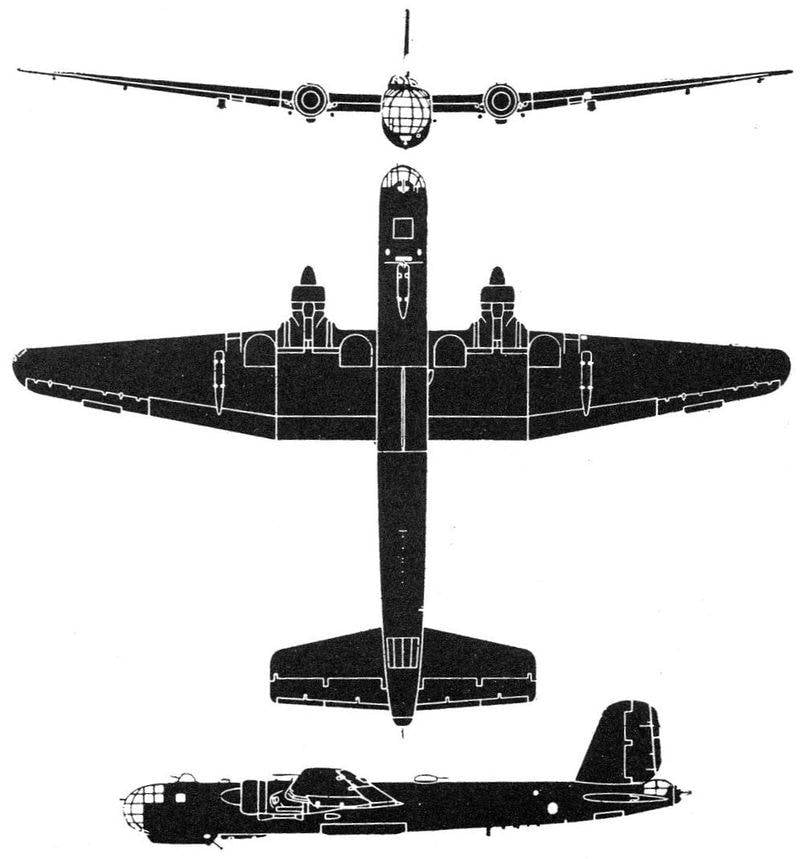
The length of the aircraft was 22 meters, wingspan - 31,44 meters, wing area - 100 square meters. In its dimensions, the German long-range bomber was quite comparable with the famous American "Flying Fortress" B-17. At the same time, the Griffin was superior to the American bomber in maximum flight speed, and its maximum take-off weight was almost one and a half tons more - 31 000 kg.
A distinctive feature of the only long-range bomber that was at the disposal of the Luftwaffe was its unusual power plant. The twin power plant was a rather sophisticated Daimler-Benz DB 606 engine, which, in turn, was a pair of two in-line liquid-cooled DB 12 601 cylinder engines installed side-by-side in one engine nacelle and working on one common shaft rotating a four-blade propeller . The total power of such twin engines was 2700-2950 hp. An aircraft engine, which alone would develop such power, in Germany then simply did not exist.
Heinkel's designers had the opportunity to use four engines of lower power, but they settled on this design for a number of reasons. The use of two nacelles on such a large aircraft was preferable from the point of view of aerodynamics, such a move by the designers helped to reduce air resistance, and also increased the maneuverability of the long-range bomber. In the future, the Germans expected to create a new powerful engine of the same power, simplifying the transition of the aircraft to a new power plant of the same power as the spark, without major design changes. In addition, the designers stopped on twin engines and for the reason that at the time of the beginning of the design, the Ministry of Aviation put forward to the 30-ton long-range bomber a schizophrenic demand for the possibility of dive bombing. The designers simply could not provide such an opportunity to a four-engine aircraft.
At the same time, engine sparking has become an inexhaustible source of problems for the new bomber, which is not by chance received the nickname "Lighter". In pursuit of improved aerodynamics, the designers arranged the engine compartment with the highest possible density. As a result, even fire-fighting bulkheads could not be found in it, and oil pipelines and oil tanks were located not far from the engine exhaust pipes. In flight, these pipes often red-hot. All electrical wiring was very tightly placed. As a result, in flight, with any depressurization of the fuel system or oil lines, a fire became inevitable. In addition to this, the problem was that at high altitude the oil sometimes began to boil, which led to disruption of the engines, in the best case, the motors simply overheated and stalled, in the worst case, a fire started on board. German designers managed to achieve relative stability in engine operation only by the 1944 year. Despite the fact that the aircraft were adopted in the 1942 year, their combat value was very conditional. Despite the very good flight characteristics, the aircraft was characterized by unacceptable problems with the power plant and the strength of the airframe.
One of the features of the aircraft, in addition to engines, was the landing gear, which, although it was a three-post, had its own differences. In order not to increase the size of the nacelles, the Heinkel designers made the main landing gear double. Each of these rather massive half-racks had its own wheel and cleaning mechanism. Half-posts were retracted into the wing of the He 177 long-range bomber in different directions. The design made it possible to fit a fairly massive landing gear into the relatively thin wing of the aircraft.
Another feature and innovation of the Germans was to be the location of defensive bomber weapons in three remotely controlled towers (for the first time on German planes), but the designers failed to cope with this task. Only the upper defensive turret was realistically remotely controlled, which housed the 2X13 mm MG-131 machine gun. At the same time, the composition of the defensive armament of the bomber was quite impressive: 1 or 2 7,92 mm machine gun MG-81G, up to 4 x 13 mm machine guns MG-131 and two 20 mm automatic guns MG-151. The maximum bomb load of the bomber could reach 7000 kg, but in reality it rarely exceeded 2500 kg. The aircraft could use the German guided bombs Henschel Hs 293 and Fritz-X, which proved to be quite effective weapons against naval targets, especially allied transport ships.
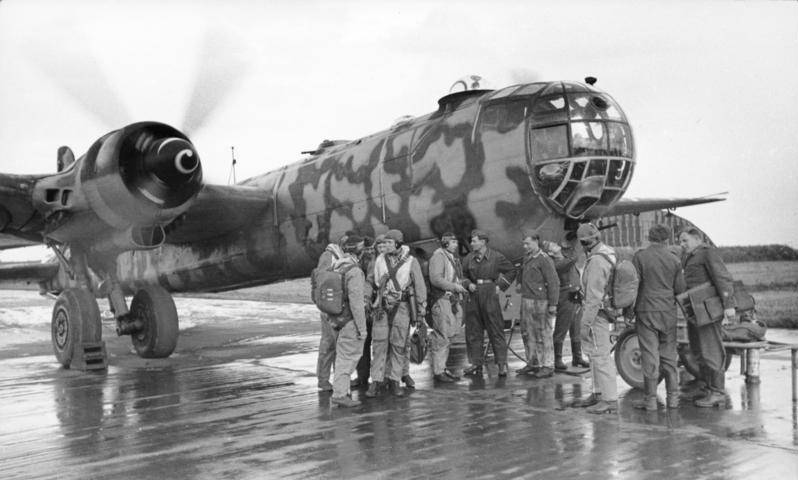
Combat use of long-range bombers Heinkel He 177
In total, by the end of the 1944 year in Germany, they managed to assemble approximately 1190 Heinkel He 177 bombers of various modifications. Despite the rather large series, they could not have a significant impact on the course of World War II. The debut of the new long-range bomber was the help of the Paulus army surrounded by Stalingrad. The Germans were forced to attract all available means to establish the "air bridge", including the latest long-range bombers, which they began to use as transport vehicles, transferring them to the airfield in Zaporozhye. However, such use of aircraft was not justified, as the machines were not converted for the transport of goods. Therefore, the Griffins could take on board no more cargo than the much lighter and more reliable He 111 bombers. In addition, they could not take the wounded out of the boiler, so they returned back empty, another problem was landing heavy vehicles at field airfields. Very quickly, the aircraft reoriented to bombing Soviet troops and the positions of anti-aircraft batteries. In total, near Stalingrad, the Germans lost 7 He 177 aircraft, all as a result of engine or chassis accidents.
Another area of application of new long-range bombers was the fight against convoys of the Allies. The most notable achievement was the sinking of the He 177 bomber with the help of the Henschel Hs 293 26 guided bomb on November 1943 of the year of the British Rohna transport with a displacement of more than 8500 tons. The disaster occurred off the coast of Algeria. 1149 people were killed along with transport, including 1015 of the US military, which became the second largest marine casualty in the number of victims stories The US Navy, which was superior only to the death of the battleship Arizona in the harbor of Pearl Harbor, when 1177 American sailors died as a result of the explosion and flooding of the ship.
In 1944, bombers were actively used on the Eastern Front to strike targets in the depths of defense. The most widespread raid was the strike on the railway junction in Velikiye Luki on 16 on June 1944, when 87 He 177 bombers were simultaneously used. Also, aircraft were involved for raids on Smolensk, Pskov and Nevel. Earlier in February 1944, long-range bombers took part in Germany’s latest attempt to conduct massive air raids on London as part of Operation Steinbock (Mountain Goat). The losses of He 177 bombers were relatively low, the Germans lost just over ten aircraft in three months of raids, but the effect of the raids was small, and the total Luftwaffe losses amounted to 329 bombers, which could be useful to the Germans in the summer of 1944 on the Eastern Front or after the Allied landing in Normandy.
By the end of the 1944 year, most of the remaining long-range Heinkel He 177 Greif long-range bombers had ceased combat activities, standing upright at base airfields. The main reason was an acute shortage of aviation fuel and lubricants. By the fall of 1944, Soviet troops removed Romania from the war, depriving Germany of Romanian oil, and the Allied aircraft inflicted serious damage on German synthetic fuel plants. Under these conditions, the Reich did not have enough fuel even for fighter aircraft, so it was not advisable to spend it on bulky voracious aircraft. And even earlier, Hitler’s generals turned down the serial production of their only long-range bomber, focusing on the release of fighter aircraft, including the latest jet aircraft.
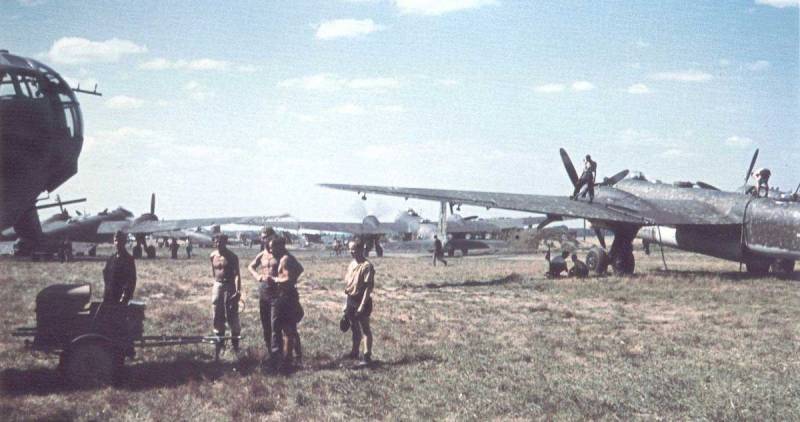
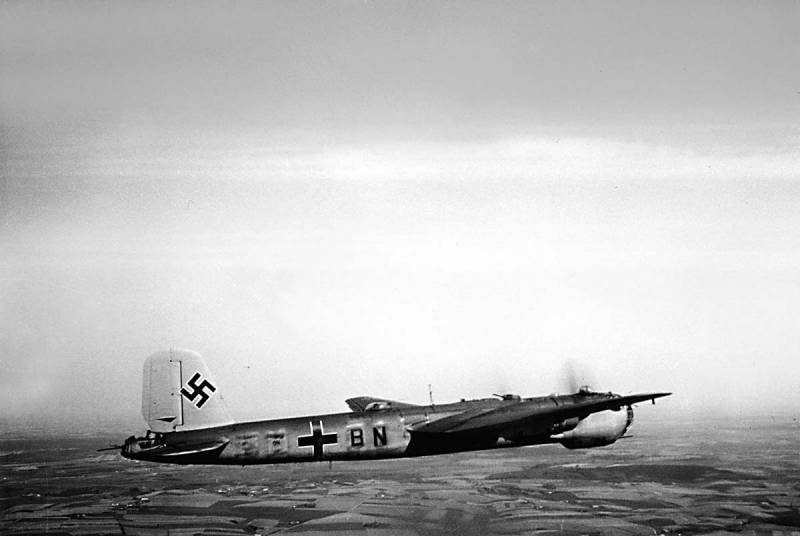
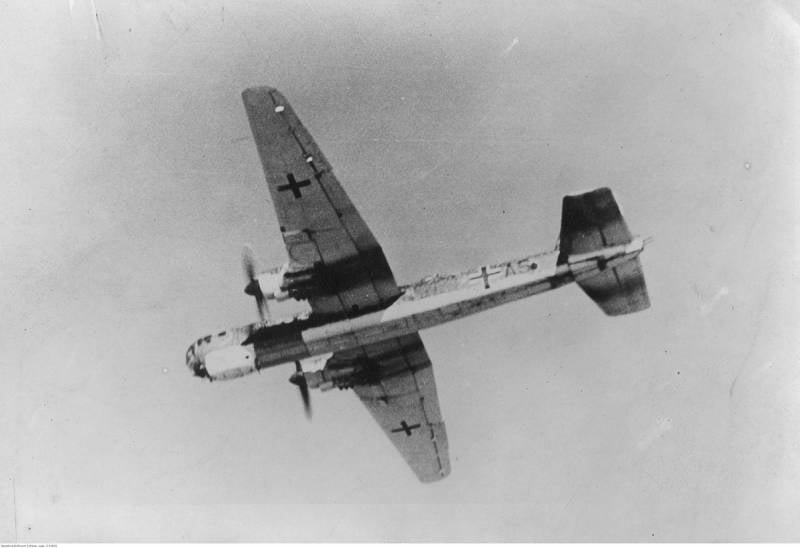
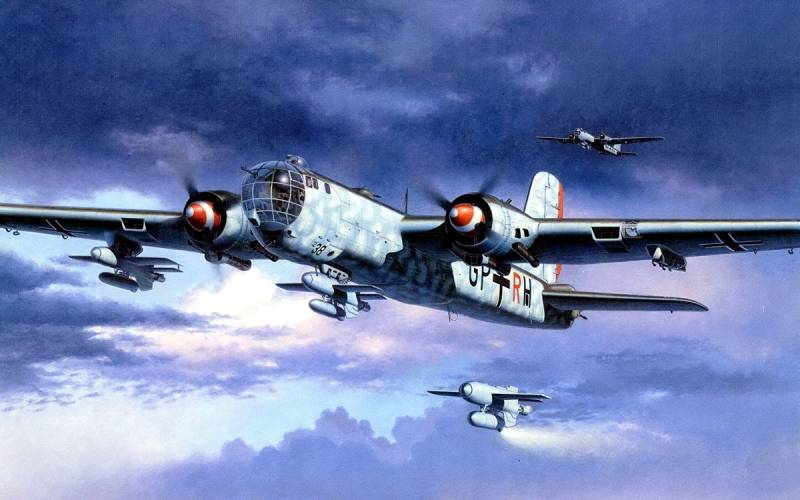
Information